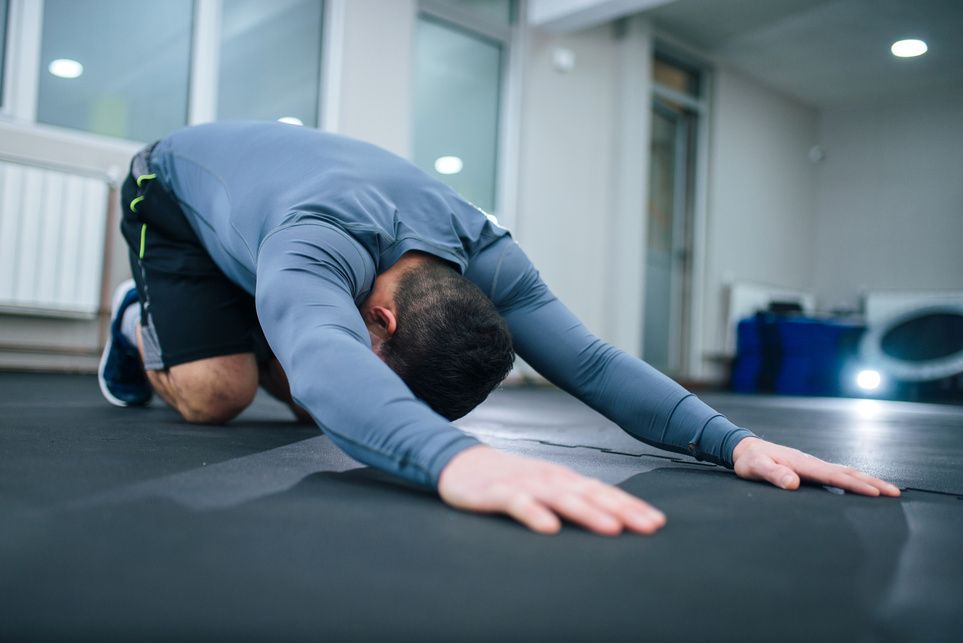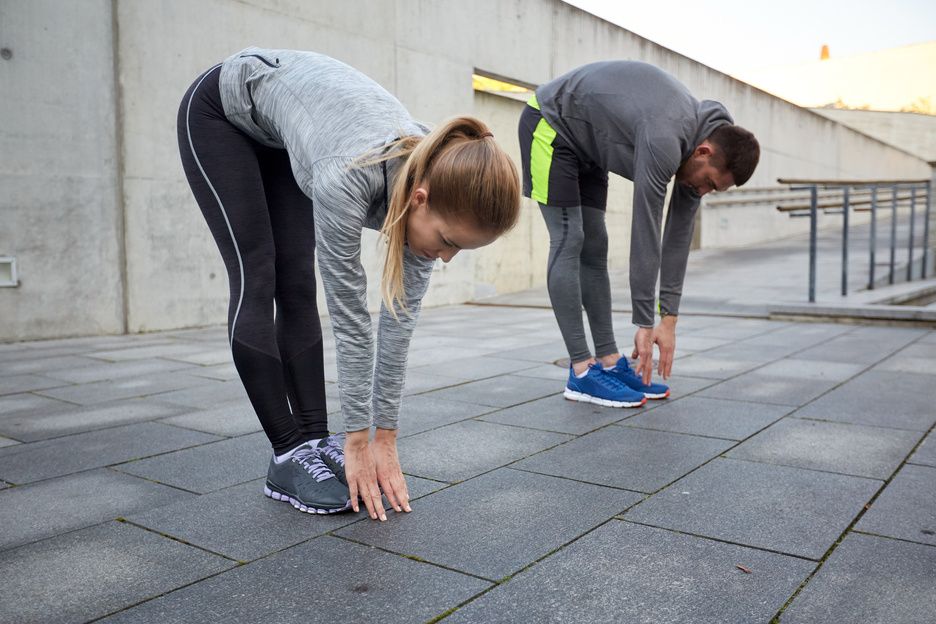In our contemporary age, many of our days are spent sitting slumped over devices. Sitting, you could argue, is the new epidemic plaguing the modern human and the cascade of effects that spawns, from obesity to chronic disease risks, constipation and joint pain or inflexibility. Following a healthy lifestyle is indisputably a vital aspect to wellbeing, so is movement and stretching, especially prior to seeking sleep and respite.
Function of flexibility
There are five core tenants of being a physically fit individual, including: cardiovascular endurance, muscular strength, muscular endurance and flexibility. Flexibility, however, is often overlooked, neglected and under-utilized as a component of fitness. It encompasses the elasticity and length of muscle tissue and joint structure and the specialized neurons and receptors which innervate the joint capsule. Maintaining and improving flexibility with regular stretching has numerous benefits, such as:
- Improving the range of motion.
- Decreasing the risk of injury because motion of flexible, mobile joints is freer and more unimpeded, and muscles more supple and pliant.
- Decreasing and preventing joint and body pain.
- Stimulating blood flow.
- Improving performance as the muscles and associated soft tissues are limber and more elastic.
- Stretching can also relieve tension and improve muscle recovery post-workout.
- Provides relaxation, decreases stress and anxiety and promotes sleep when conducted prior to sleep.
- Practicing regular stretching such as yoga, can improve balance and posture.
- It enables ease of movement and the execution of daily tasks without strain or injury.
- Stretching and strengthening muscles and joints helps to decrease the pain, inflammation, stiffness and restricted motion characteristic in various arthritic conditions.

For many people suffering from joint pain as a consequence of injury or arthritis, exercise may seem counterintuitive for fear of exacerbating pain, but stretching and strengthening is vitally important to improve symptomatology, maintain mobility, function and the other health benefits of physical activity. Other lifestyle modifications indicated for these musculoskeletal issues include weight reduction (if overweight), following an anti-inflammatory diet, and taking a joint supplement. Taking a supplement such as JointFuel360, may help with the pain and degradation of joint tissues as it contains collagen fibers, hyaluronic acid and inflammation-combatting antioxidants, including Boswellia serrata, resveratrol, and turmeric.
Stretches to Include
Whether you are an exercise novice, a seasoned expert, and regardless of age or ability, stretching and maintaining good flexibility should be a part of your daily and weekly regiment. Dipping your toes into a regular yoga or tai chi practice, is a great way to improve flexibility, promote relaxation, prevent injury, improve pain and increase calisthenic strength and balance. Some examples of stretches that can be incorporated into one’s repertoire, especially prior to bed, include the following:
Cat-cow pose
This move involves assuming a position on all fours, and slowly alternating between flexing the spine, resembling a feline stretch, and spinal extension that rounds the spine to maximize the areas in the intervertebral spaces. This helps to improve spinal mobility and relieve pain.
Sun salutation
The sun salutation is a hallmark of a yoga sequence or vinyasa, that is both stretching and strengthening. It involves a forward fold and a downward dog which are great for stretching the back, shoulders and hamstrings, followed by a chaturanga where one holds a low pushup which helps strengthen the core and shoulders and ends in a pronounced spinal flexion called an upward facing dog.

Forward fold
This simple but highly effective and relieving stretch is both great for the hamstrings, as hamstrings tend to be tight and least often lengthened and stretched, and the lumbar spine, especially. It is done how it sounds and involves keeping a very slight bend in the knees to avoid hyperextending and injuring them and folding your chest anteriorly toward your thighs with head resting downwards facing the chin.
Butterfly
This pose is especially good to stretch and encourage more mobility in the groin area, inner thighs, hips and lumbar spine, and involves seating yourself on the ground with the soles of your feet pressed together towards the pelvis, letting the weight of the legs draw the knees towards the floor.
Happy baby
In recognition that the name of this pose sounds rather silly, it is a surprisingly relaxing stretch that opens the pelvis and lower back and stretches the inner thigh area. To achieve this move, one must lay on their back, grasp their feet, open the legs as far as is comfortable, and rock the lower spine back and forth.
Upper back stretches
Upper back stretches help to improve posture and oppose the rounding of the shoulders and cervical spine. Examples of these dynamic stretches include scapular retractions where one pulls their scapula or shoulder blades posteriorly to open the chest, as well as lateral pull downs where you stand erect, open the chest and simultaneously pull both arms towards the waist, keeping the shoulders stabilized and activating the lateral back muscles termed the latissimus dorsi.

Tips for practice
- Do not bounce in a stretch and cease the action or decrease the depth of motion if it results in pain.
- Hold a given stretch for at least 30 seconds or longer if it feels necessary.
- Some stretches or exercises may be contraindicated with certain conditions or after surgery, and so physician consultation may be warranted.
- Pay specific attention to areas that are utilized disproportionately in a sport or activity often used, and work trouble areas that are tighter and more painful than others.
- Warm the body up prior to performing deep stretches, such as a dynamic stretch routine or commit to a few moments of simple walking in place, squats and walk-out planks.
- Stretching and doing yoga prior to bed is a fantastic way to stretch and relieve pain and tension in fatigued muscles and joints at the end of a day. Aim for at least 5-10 minutes or a longer practice as you progress.
- Practice controlled, rhythmic breathing, and take heed not to hold your breath.
- Patience is key to preventing injury and overstretching muscles and connective tissues. Gradually perform a posture, allowing the muscles to extend slowly and acclimate, and slowly release the stretch as well.
Improving flexibility through routine stretching, especially at night, can improve flexibility, range of motion, strength, reduce pain, and promote relaxation and sleep.
References
Flexibility: UC Davis Sports Medicine. Flexibility | Sports Medicine | UC Davis Health. (2022). Retrieved March 4, 2022, from https://health.ucdavis.edu/sportsmedicine/resources/flexibility_descriprion.html
Gummelt, A. D. (n.d.). The impact of flexibility training on performance. ACE. Retrieved March 4, 2022, from https://www.acefitness.org/education-and-resources/professional/expert-articles/5598/the-impact-of-flexibility-training-on-performance/
https://agapephysicaltherapy.com/blog/why-you-should-always-stretch-bed. Agape Physical Therapy. (2022). Retrieved 2022, from https://agapephysicaltherapy.com/blog/why-you-should-always-stretch-bed
Huizen, J. (2020). Stretching before bed: Benefits and stretches to try. Medical News Today. Retrieved March 4, 2022, from https://www.medicalnewstoday.com/articles/stretching-before-bed#safety
Mayo Foundation for Medical Education and Research. (2022, February 12). Stretching is not a warm up! find out why. Mayo Clinic. Retrieved March 4, 2022, from https://www.mayoclinic.org/healthy-lifestyle/fitness/in-depth/stretching/art-20047931
